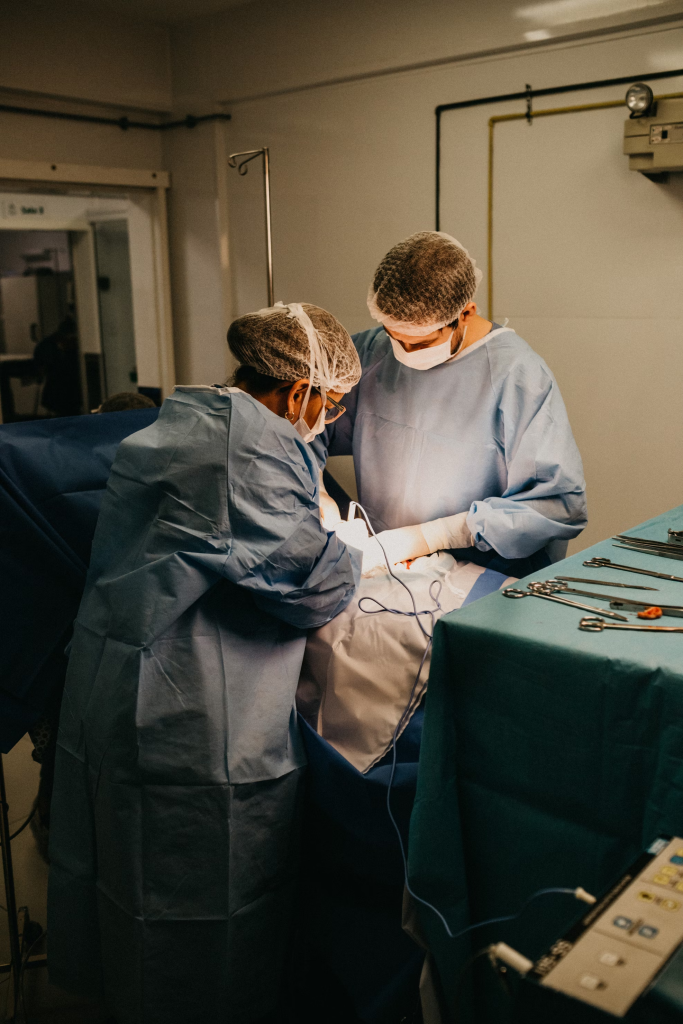Pneumonectomy is a surgical procedure that involves the removal of an entire lung, usually as a result of a medical condition that affects the lung’s functionality.
This procedure is often performed when other treatment options are no longer viable or when the disease has progressed to a stage where the lung is deemed non-functional or hazardous to the patient’s health.
Pneumonectomy is typically performed to treat severe or life-threatening conditions, and its primary goal is to remove the affected lung tissue to prevent the spread of disease or further damage to the body.

This article will explore the main causes of pneumonectomy, the reasons for its necessity, and the factors considered by healthcare professionals when recommending this procedure. The causes of pneumonectomy can be grouped into several broad categories, including cancer, chronic diseases, trauma, infections, and congenital conditions.
Understanding these causes is crucial for patients, healthcare providers, and anyone seeking to learn about the circumstances under which pneumonectomy might be performed.
Click Sites For More Details
Causes Of Pneumonectomy
Lung Cancer
One of the most common reasons for performing a pneumonectomy is lung cancer, which accounts for the majority of cases. Lung cancer can be classified into two main types: non-small cell lung cancer (NSCLC) and small cell lung cancer (SCLC).
- Non-Small Cell Lung Cancer (NSCLC): NSCLC is the most common type of lung cancer and includes adenocarcinoma, squamous cell carcinoma, and large cell carcinoma. It is often diagnosed at later stages due to the subtle symptoms in its early stages. In cases where the tumour is confined to one lung and has not spread to other organs, pneumonectomy may be necessary to remove the entire affected lung. A pneumonectomy may also be performed in cases where the cancer is located in the central parts of the lung, making it impossible to perform less invasive surgery like a lobectomy (removal of a lung lobe).
- Small Cell Lung Cancer (SCLC): Although SCLC is more aggressive and tends to spread more quickly than NSCLC, it can also result in a pneumonectomy if the tumour is isolated in one lung. However, due to the rapid spread of SCLC, pneumonectomy is less commonly performed than in cases of NSCLC.
The decision to perform a pneumonectomy due to lung cancer depends on factors like the size, location, and stage of the tumour, as well as the overall health and lung function of the patient. In many cases, other treatment options, such as chemotherapy, radiation, or a combination of therapies, are considered first before opting for surgical intervention.
Chronic Obstructive Pulmonary Disease (COPD) and Emphysema
Chronic obstructive pulmonary disease (COPD) is a group of progressive lung diseases that cause breathing difficulties and can ultimately result in respiratory failure. Emphysema, a type of COPD, is characterised by the destruction of the alveoli (tiny air sacs in the lungs), leading to reduced lung surface area for gas exchange.
Over time, the lung tissue becomes damaged and less efficient at oxygenating the blood.
In severe cases of emphysema or COPD, when other treatments like medications, oxygen therapy, or lung volume reduction surgery are no longer effective, a pneumonectomy may be performed.
This is particularly true when one lung has become severely damaged and no longer functions, leaving the other lung with the task of providing adequate respiratory function.
While pneumonectomy is not typically the first line of treatment for COPD, it may be considered when one lung is completely destroyed and the other lung is still functional.
However, this is a complex decision, as removing a lung in a patient with COPD requires careful evaluation of the patient’s ability to tolerate the procedure and survive with just one lung.
Trauma and Injury
Pneumonectomy can also be performed in cases of traumatic injury to the lungs, particularly when the damage is extensive and cannot be repaired. Traumatic injuries that may necessitate pneumonectomy include severe chest trauma, gunshot wounds, stab wounds, or injuries sustained in motor vehicle accidents.
In such cases, if the lung is irreparably damaged and poses a risk to the patient’s life, removal of the affected lung may be the only option to prevent further complications, such as infection or haemorrhage.
Trauma-induced pneumonectomy is a life-saving procedure, but it is generally considered a last resort, as the loss of a lung can lead to long-term respiratory challenges for the patient.
The decision to proceed with this surgery depends on factors such as the extent of the lung damage, the patient’s overall health, and the potential for recovery following the removal of the lung.
Infections and Abscesses
Severe, persistent infections in the lungs can also lead to the need for pneumonectomy. Conditions like chronic tuberculosis, fungal infections, and lung abscesses may damage the lung tissue to the point where it becomes non-functional.
In cases where the infection is localised to one lung and does not respond to antibiotic or antifungal treatments, surgery may be required to remove the infected tissue.
- Tuberculosis (TB): Tuberculosis, a bacterial infection primarily affecting the lungs, can cause severe damage to lung tissue over time. When TB becomes chronic and resistant to treatment, a pneumonectomy may be necessary to prevent the spread of the infection to other parts of the body. In the past, TB was a more common cause of pneumonectomy, although its incidence has decreased significantly in developed countries due to advances in antibiotics and public health initiatives.
- Lung Abscesses: A lung abscess is a localised collection of pus in the lung, often caused by bacterial infections. In cases where the abscess does not resolve with antibiotic treatment and leads to significant lung destruction, pneumonectomy may be required to remove the affected lung tissue.
Infections that necessitate pneumonectomy typically involve aggressive or recurrent infections that cannot be controlled by other means. Surgical intervention is often required to prevent the spread of infection and to preserve the health of the remaining lungs.
Congenital Lung Abnormalities
In rare cases, pneumonectomy may be necessary to treat congenital lung abnormalities that impair lung function. Conditions such as congenital cystic adenomatoid malformation (CCAM) or congenital pulmonary airway malformation (CPAM) are developmental disorders that lead to abnormal lung tissue growth and cyst formation. T
hese conditions can cause respiratory distress and may result in recurrent infections, bleeding, or other complications.
When congenital lung abnormalities severely affect lung function or cause other life-threatening issues, a pneumonectomy may be required to improve the patient’s quality of life.
Surgical removal of the abnormal lung tissue is generally recommended if the condition cannot be managed through other treatments and if the abnormalities are isolated to one lung.
Lung Transplantation
In some instances, pneumonectomy is performed as a part of the process of preparing for a lung transplant. For patients with severe lung disease or lung failure who are candidates for a lung transplant, a pneumonectomy may be performed to remove the damaged lung before a transplant can take place.
This is particularly common in cases of lung cancer, emphysema, or other conditions where one lung is non-functional or damaged beyond repair. In these situations, the procedure is aimed at clearing space for the transplant and improving the chances of a successful lung transplant outcome.
Lung Diseases and Autoimmune Conditions
Certain autoimmune diseases can also lead to lung damage that may necessitate a pneumonectomy. Conditions like rheumatoid arthritis, scleroderma, and systemic lupus erythematosus (SLE) can cause pulmonary fibrosis, a condition where lung tissue becomes scarred and stiff, impairing the lung’s ability to function properly.
In severe cases, when fibrosis affects one lung significantly more than the other, pneumonectomy may be recommended to improve the patient’s respiratory function.
Conclusion
Pneumonectomy is a complex and serious surgical procedure that is generally reserved for cases where other treatments have failed or when the damage to the lung is extensive and life-threatening.
The primary causes of pneumonectomy include lung cancer, chronic obstructive pulmonary disease, trauma, infections, congenital lung abnormalities, and certain autoimmune diseases.
Healthcare professionals carefully consider factors such as the underlying cause, the extent of lung damage, the patient’s overall health, and their ability to tolerate the surgery when deciding to perform a pneumonectomy.
While pneumonectomy is a life-saving procedure in many cases, it also carries risks and requires extensive post-operative care to support the patient’s recovery and ongoing lung function.
Frequently Ask Question
What are the long-term effects of living with one lung?
Living with one lung can significantly impact a person’s breathing capacity, especially during physical activities or strenuous exercise. The remaining lung usually compensates by expanding to fill the space left by the removed lung, but it may take time for the body to adjust.
Over time, many people can lead relatively normal lives, though they may have a reduced exercise tolerance or feel short of breath more easily. Regular check-ups, healthy lifestyle choices, and breathing exercises are crucial for managing long-term health after a pneumonectomy.
How can I prepare for a pneumonectomy?
Preparing for a pneumonectomy involves a series of steps, including a thorough evaluation of your overall health. Your doctor may perform imaging tests such as a chest X-ray or CT scan, along with lung function tests, to assess the extent of the lung damage or disease. You may also need to quit smoking and make lifestyle changes to improve your health before the surgery.
The surgeon will discuss the risks and benefits of the procedure with you, and you will receive detailed instructions on what to expect before, during, and after the surgery.
What lifestyle changes are necessary after a pneumonectomy?
After a pneumonectomy, it is important to adopt a healthy lifestyle to support the remaining lung. This includes avoiding smoking, maintaining a healthy weight, and engaging in regular, low-impact exercise to improve lung function and overall fitness. Breathing exercises and pulmonary rehabilitation are often recommended to help strengthen the respiratory muscles.
Additionally, avoiding exposure to pollutants, allergens, and respiratory infections is crucial, as the remaining lungs will be working harder. Regular follow-up appointments with your doctor are necessary to monitor your recovery and lung health.
